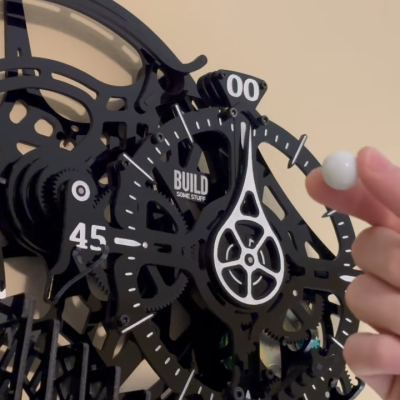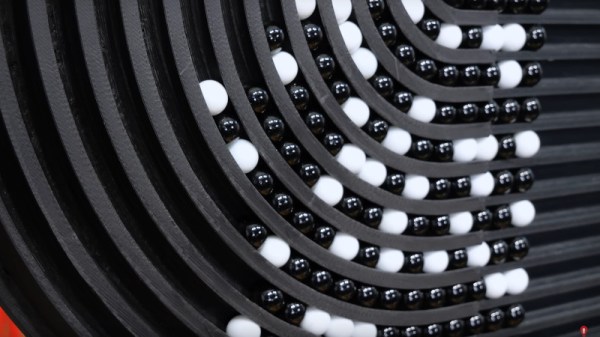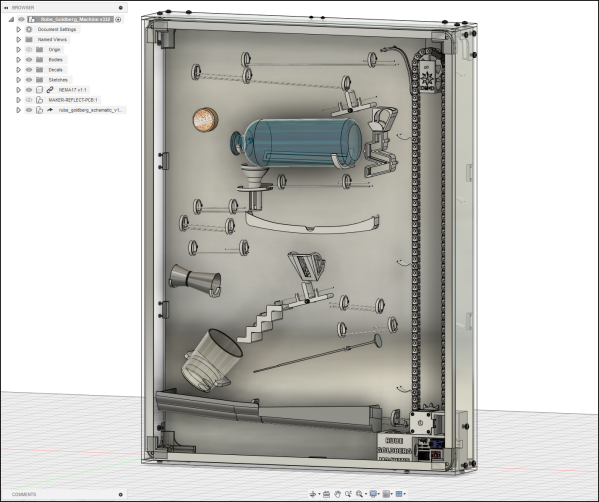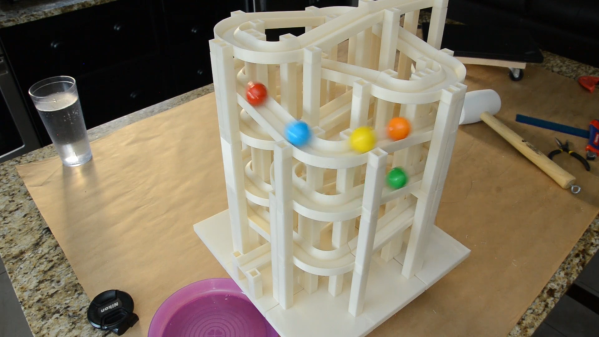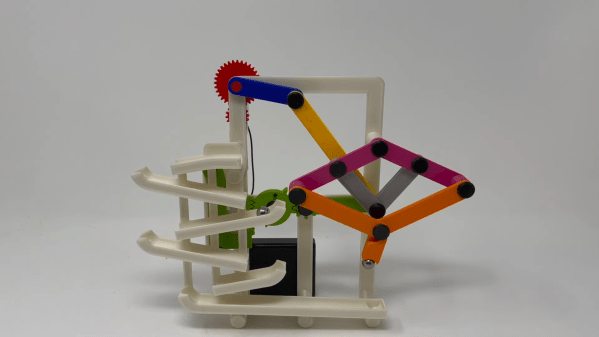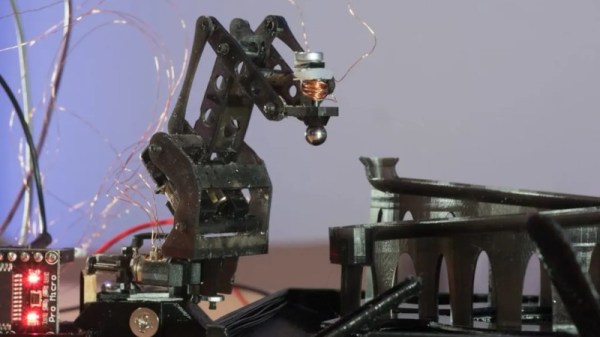Some time ago [Kelton] was working on a clock inspired by Rube Goldberg contraptions. It uses only a single motor, and he’s proud to now show off the finished product (video, embedded below.)
The clock shows hours on the left, and minutes on the right. Every sixty minutes the clock drops a marble. That marble kicks off a series of visually-satisfying operations that culminate in advancing the hour. Then everything resets, and it continues for as long as it has power.

At the top of each hour, the minute hand tips a marble with a gravity cam. That marble runs down a track gaining enough momentum to flip a kicker, and a short series of falling dominoes builds enough force to tip and trigger the spring-loaded ratchet that locks in a new hour. You can skip directly to 2:09 if you just want to listen to [Kelton] explain the whole operation from beginning to end.
We think it’s very interesting to note that this clock’s complexity is, if anything, understated. Each of the mechanisms involved must individually reset by their own separate mechanisms, each of which are as intriguing as their showier counterparts, and we’re sure they were every bit as difficult to get just right. And of course, it’s all driven by a single motor.
You may recall the promising start this clock project was off to and we’re delighted to see it come to completion, especially considering its complexity. Not every project sees completion, and fewer still get a version two, but that’s okay. What really floats our boat is seeing the process and details as well as hearing about what worked and what didn’t. We’re glad this clock reached the finish line, but even if something doesn’t work out, there’s always something to learn.
Continue reading “Newly Completed Overly-Complex Clock Synchronizes Multiple Mechanisms”



